
Love, Peace, and Happiness
December 20, 2014Most people will feel positive about the emotions, mental states, moods of love, peace, and happiness, consequently a text about ways to promote these emotions or states both individually and socially should be an easy task.
And yet, because these three words mean different things to different people, a discourse about them can be easily misunderstood. Many people will associate the terms with the counterculture of the 1960s or the New Age spirituality of the 1970s. Skeptics and down to earth persons will be repulsed by the headline, anticipating metaphysical drivel. Readers who are inclined to spirituality will start reading anticipative, only to be bitterly disappointed because of the sober and dry argumentation.
As emotions cannot only be explained by dry scientific data, but also by poetry, quotes, music and song lyrics, pictures, stories, some of these are included to give an intuitive understanding of the theme even if one doesn’t like to follow the scientific argumentation.
Prelude
“Love, Peace and Happiness” was a double album by The Chambers Brothers from 1969. This is unexceptional, standard Soul music, but it is not bad and the album includes classics like the Traditional “Wade in the Water,” Otis Redding’s “I Can’t Turn You Loose,” and Curtis Mayfield’s “People Get Ready.” The lyrics of the title song are bearable:
All our love, peace, and happiness
We’re gonna give to you
All our love, peace, and happiness
You can share yours too
It’s a small step for man
But it’s a giant leap
For all mankind
I got love, I got peace
I got happiness and
You can have it too
Together, we stand
Divided, we fall
Love, peace, and happiness
Is the best part of all
The song lyrics of Peace, Love, and Happiness from Superhero Brother are a bit more rich in content:
Why let this world just wait on your shoulders?
Pick it up, push it off, before you let yourself get colder
Just look into the eyes, the good eyes of a child
And see that love rise like a river and float for a thousand miles
Breathing deep, feel your heart beat
Just to know that life’s worth living
Feel your feet on the earth
You better love it while it’s still here spinning
I got no time to worry
About troubles or misgivings
You’ve let it flow, let yourself go
‘Cause if you’re hating then you sure ain’t living
I go and eat this daily bread
But so many people starving
How come the presidents just build more bombs
When nations start dissolving?
With all that money spent on guns
Instead of food and education
Need to buy a little peace and love instead
Start the healing of the nation
What is love?
love is the mystery of water and a star
Pablo Neruda
From a scientific point of view, love is a state of mind plus the resulting condition of the endocrine and autonomous nervous systems. It is nearly impossible to describe the complex interaction of the various brain areas, especially the interaction of the limbic system (olfactory bulbs, hippocampus, amygdala, anterior thalamic nuclei, etc.) with the conscious mind, represented by the working memory (central executive) and more or less the whole cerebral cortex. A short lexicological study may help to get an idea of what is going on.
Synonyms of Love:
adoration, affection, appreciation, attachment, devotion, fondness, passion, generosity.
Antonyms:
hatred, dislike, animosity, acrimony, antipathy, enmity, malice, rancor.
The relation between people can include:
1. Sexual attraction.
2. Economic necessity
3. Social necessity
4. Empathy, compassion
Sexual Attraction
It includes affection, longing, desire, lust, and is depending on the looks, the smell, the feeling of the body warmth, the feeling of skin and hair.
Sexual urges are basic hormonal (testosterone, estrogen) functions of human reproduction. Sexual arousal is a function of the sympathetic nervous system, but the orgasm and its aftermath involves the parasympathetic nervous system too.
Economic necessity
People will join groups and communities to support each other and pursue common goals. Women who face economic hardship and uncertainty will try to find an affluent partner who can support them. Couples will found a family to jointly build their future.
The evolutionary angle: Sharing communities had an advantage in early history and allowed humans to survive in a hostile world. Natural selection (including not only the genetic evolution process but also the social-cultural evolution process) has imprinted an inclination to cooperation and sharing in humans, though the necessity to share and cooperate diminished as parts of societies became affluent and resources plentiful (this is the reason why there are more one person households in the affluent societies of the West).
Economic necessity could be viewed as a subset of social necessity.
Social necessity
Most humans need social contact and they suffer from loneliness. Like economic necessity, social necessity is a genetic predisposition and a social/cultural predisposition (established by our upbringing and education). Contact with other humans and intellectual exchange are necessary to develop our brains.
The social component includes gratitude, which is a social function necessary for maintaining the social contract. Gratitude is mainly learned and to a lesser extent genetically programmed. Synonyms are appreciation, thankfulness, grace, respect.
The brain plasticity makes it possible to reprogram and dedicate wide areas of the cerebral cortex to a close partner. These areas communicate with similar areas of the partner via language, mimic, gestures, and any other kinds of expressions. The close linking and synchronization of the two minds creates a network which has access to two sets of intellectual resources and greatly enhanced capabilities beyond the simple addition of the two intellects.
When one of the partners dies, the dedicated ares of the survivor are suddenly useless and immobilized, quit similar to what is happening in a stroke. This is the essence of loss. It needs a long time to reprogram such areas again. Loss rehabilitation is like stroke rehabilitation.
Empathy, compassion
The mirror neurons in the premotor cortex enable us to imagine the pain and suffering of fellow humans. Empathy is a derivate of imitation and therefore it is felt more intense for humans which are similar to us (because they are more easy to imitate). Empathy for people of the same ethnic group, the same nationality, the same race is higher.
Synonyms of empathy are compassion, sympathy, pity, mercy, affinity, appreciation, understanding.
I love you without knowing how, or when, or from where
I love you simply, without problems or pride
I love you in this way because I do not know any other way of loving
but this in which there is no I or you
so intimate that your hand upon my chest is my hand
so intimate that when I fall asleep your eyes close
Pablo Neruda,
Anthropologist Helen Fisher defines three sequential phases of erotic love: Lust, appearance, and attachment.
1. Lust is driven by the sex hormones testosterone and estrogen, both of which occur in men & women and enhance a person’s libido & carnal yearnings. These lead to a heightened sense of basic sexual drivers such as appearance and pheromones.
2. Appearance is a factor, though no one wants to admit to be superficial. Evolutionary psychologist Devendra Singh discovered that, on average, men tend to prefer women with a waist-to-hip ratio of 0.7. Psychologist Robert Kurzban added BMI (body mass index) and facial symmetry as factors in attractiveness. Men typically look for features that hint at fertility, health, and youthfulness. Women typically look for features that hint at virility, strength, health, and ability to provide (meaning social status indicators like salary and education).
Smell and pheromones have a big impact. Women have a more sensitive nose that men and are drawn to the smell of men whose immune system is different from their own. The more different the immune system, the wider the range of immunities their offspring would have (disassortative sexual selection). Women are also drawn to men whose smell is similar to their father.
All of this happens unconsciously, within systems as primal as thirst and hunger. But one can see the evolutionary foundations — we’re seeking out a mate that is capable of producing healthy offspring.
3. Attachment is driven by oxytocin and vasopressin. Whether we like it or not, our bodies physically deemphasize lust and attraction sooner or later. That’s where these two hormones come into play; they foster long-standing relationships and bonds that keep couples together as they have children and form families.
Brain plasticity makes it possible to reprogram the brain. Hebb’s principle (neurons which fire together, wire together), means, that one can learn to consciously control the neurons, which produce the for “love, peace, and happiness” relevant neurotransmitters and emit them in the synaptic cleft. The decision to do so and doggedly determination are the only thing needed.
Breathing exercises, various meditation methods and other mind-body intervention, music and other arts can help. Nerves which control motor functions are two-way, which means slow breathing, slow motion movements, slow and mindful eating will calm down a person.
The most effective training program for love though is the determination of a couple (or a group of people) to stay together, beat the odds, muddle through, get used to each other, accept, tolerate, understand each other, and let love grow day by day.
What is peace?
poetry is an act of peace
peace goes into the making of a poet as flour goes into the making of bread
Pablo Neruda
Counter culture and new age spirituality have written peace on their banner, but pop artists, advertisers, politicians, and anybody else who wants to sell something have used it in abundance too. The term peace has been trivialized, devoid of any meaning, misused, and turned on its head.
The German Peace Offensive (Friedensturm) of July 15, 1918 is one example. Peace is protected and if necessary forcefully defended by tanks, cannons, fighter jets, bombs, missiles. The UN peacekeeping force MINUSTAH takes care that Jean-Bertrand Aristide is not elected again and US puppets can turn Haiti into a sweatshop paradise for global corporations. UNMIK peacekeepers in Kosovo aid NATO to keep the notorious criminal Hashim Thaci in power.
US peace activists like Daniel Berrigan, the late Philip Berrigan, Megan Rice, Michael Walli, Greg Boertje-Obed, Mary Anne Grady-Flores, Bonnie Urfer, and others were sentenced to long prison terms. That these activists are still allowed to be called “peace activists,” instead of compulsory labelled as terrorists or communists or whatever else derogatory terms are available, shows that peace is not something US society is holding in high esteem.
US society is not peaceful, a fact proven beyond doubt by 310 million privately owned firearms, frequent mass shootings, 640 billion US$ (nominal) military spending, and 7,315 nuclear warheads.
According to a opinion poll in 2013, only 25 percent of US-Americans support a handgun ban, a record low.
The motto Love, Peace, and Happiness has been commercialized of course, an issue which needs not to be discussed here. A few examples for the interested reader:
http://innerpeacemovement.org/
http://propertyintangible.com/2008/06/no-peace-in-inner-peace-movement.html
http://peacelovehappinessfoundation.org/
The motto “Love, Peace, and Happiness” has also been used for proselytizing by sects, cults, religions. We are told, that Islam is a religion of peace, and accordingly jihadists fight to spread peace around the world.
As written before, the term peace has been trivialized, misused, abused, perverted. Has peace lost its innocence? Is it tainted or damaged beyond repair? Can the word peace ever be used again in a meaningful way?
Synonyms of Peace:
harmony, serenity, calm, composure, tranquility, placidity.
The words amity, concord, friendship, unity are used to characterize the peaceful relation between people.
The words truce, armistice, cessation are used when a conflict ends either by exhaustion or by a sudden outbreak of sanity.
Antonyms
hate, anger, aggression, discord, fighting, violence, war.
Looking through the words it becomes clear, that there is nothing which could replace the term peace. We are stuck with it and just have to ignore the ongoing profanation and desecration by demagogues, propagandists, religious fanatics, and other evil actors.
Definition by exclusion
Antonyms are a useful method to define a word. Peace is clearly the absence of hate, discord, fighting, violence, and war. It is also the absence of evil, immorality, cruelty, brutality, barbarism, ferocity, ruthlessness, sadism, viciousness. The antonyms of love can be added to this list and they fit perfectly, which implies, that without love, peace is not possible.
There is a useful Wikiversity page which contains the following proposals:
Connect Help and Self-Help
The main solution to the world hunger problem is the principle of self-sufficiency. Every farmer should have the right to own his piece of land from which he can live with his family. The landless farmers have to get fertile land by the governments.
The landlords must give portions of their land to the poor. Without land reforms, the world hunger problem cannot be solved. New agricultural land should be created, which can happen by the forestation of desert areas. Deforestation must stop. Instead establishing monocultures (oil palm, biofuel) for export, each country should provide sufficient land for the population. Small farmers in developing countries must be helped by agricultural experts to start effective organic farming, with cooperative structures, and fair global trade.
Promote common sense in the world
Without a return to the values of frugality, inner happiness, universal love, and mutual aid the world cannot be saved. If egoism dominates, happiness in the world has no chance. We need a world family, which consists of many small families, and where everyone helps everyone.
Build islands of happiness
The village communities should become places of happiness, so that rural migration ends. If people have arrived in the city slums, it is very difficult to get them back. In the slums we have to built up positive structures in a different way. But everywhere a new culture of civic spirit is necessary.
Work for the cooperation of all positive people
We need global change. This can happen only through a global alliance of all positive forces in politics, science, culture, and society. This can happen only by the intensive efforts of many individuals, each in her/his place and within her/his means.
At the moment selfishness dominates the world and the sense of community is small. But things can change. We only have one earth. If we destroyed our earth, we will all perish together. We are a world family. A good family will help the most vulnerable members and does not let them starve. In a good family everyone helps everyone. All work for the happiness of the whole family an in that way all become happy.
http://en.wikiversity.org/wiki/Happiness/A_World_of_Peace,_Love_and_Happiness
I taught myself to live simply and wisely,
to look at the sky and pray to earth
and to wander long before evening
to tire my superfluous worries.
When the burdocks rustle in the ravine
and the yellow-red rowanberry cluster droops
I compose happy verses
about life’s decay, decay and beauty.
I come back. The fluffy cat
licks my palm, purrs so sweetly
and the fire flares bright
on the saw-mill turret by the lake.
Only the cry of a stork landing on the roof
occasionally breaks the silence.
If you knock on my door
I may not even hear
Anna Akhmatova
What is happiness?
There is “happy music,” “happy shopping,” “happy hours” (a marketing term for a period of time in which a public venue, such as a restaurant, bar, bowling alley, stadium, or state/county fair, offers discounts). The retailers report happy returns, people spend happy holidays, McDonalds sells Happy Meals.
Happiness is a popular theme in romantic novels, self-help books, and columns from agony aunts.
Happiness is a smiley-face emoticon and it is a popular theme on social networks, but the discussions concerning it are superficial or completely beside the point. People often have widely differing views about the nature of happiness and about possible ways to achieve it.
Happiness is something that everybody would like to experience, and yet many people are unhappy at one point in their life, most of their life, or even all of their life. There are areas of environmental or economic deprivation, disaster zones, war zones, where most people or all people are deeply unhappy.
Why is happiness so difficult to achieve? What is the true nature and the essence of happiness? Beyond the use as cliché, adage, buzzword, and platitude, happiness is usually regarded as a state of mind and a feeling, but that doesn’t help much to explain it. Maybe semantics and a correlation with related words can help:
Definition by meaning (semantics)
Happiness is a pleasant and contented mental state.
Happiness is a mental or emotional state of well-being characterized by positive or pleasant emotions ranging from contentment to intense joy.
Happiness means flourishing, prospering, living a good life.
Related feelings and states of mind: love, peace, hope, pleasure.
Definition by synonyms
well-being, felicity, eudaimonia, joy, content, delight, gladness, cheerfulness, beatitude, satisfaction, fulfillment, glee.
Agitated and temporary states of happiness are: bliss, exhilaration, elation, exuberance, euphoria, ecstasy.
Antonyms:
unhappiness, despair, misery, melancholy, gloom, depression, dissatisfaction, displeasure, sadness, sorrow, worry, woe, pain.
Definition by quote
Thousands of candles can be lighted from a single candle, and the life of the candle will not be shortened. Happiness never decreases by being shared.
Buddha
Learn to let go. That is the key to happiness.
Buddha
Sometimes your joy is the source of your smile, but sometimes your smile can be the source of your joy.
Thich Nhat Hanh
Happiness is not something ready-made. It comes from your own actions.
Dalai Lama
I believe compassion to be one of the few things we can practice that will bring immediate and long-term happiness to our lives.
Dalai Lama
The man is happiest who lives from day to day and asks no more, garnering the simple goodness of life.
Euripides
Very little is needed to make a happy life; it is all within yourself, in your way of thinking.
Marcus Aurelius Antoninus
There is only one way to happiness and that is to cease worrying about things which are beyond the power of our will.
Epictetus
Happy he who learns to bear what he cannot change.
Friedrich Schiller
Happiness is when what you think, what you say, and what you do are in harmony.
Mahatma Gandhi
Happiness is a how; not a what. A talent, not an object.
Herman Hesse
Love is that condition in which the happiness of another person is essential to your own.
Robert A. Heinlein
A quiet secluded life in the country, with the possibility of being useful to people to whom it is easy to do good, and who are not accustomed to have it done to them; then work which one hopes may be of some use; then rest, nature, books, music, love for one’s neighbor — such is my idea of happiness.
Leo Tolstoy
Let us be grateful to the people who make us happy; they are the charming gardeners who make our souls blossom.
Marcel Proust
Definition by the political concept of GNH
In 1972 Jigme Singye Wangchuck was just 17 years old when he, after his fathers death, became king of Bhutan. The teenage king immediately proposed to replace GDP (Gross Domestic Product) with GNH (Gross National Happiness) as indicator of Bhutan’s social and economic progress.
His suggestion was accepted and since then Bhutan measures prosperity through the spiritual, physical, social, and environmental health of its citizens and the natural environment. The Centre for Bhutan Studies developed a sophisticated survey to measure the population’s general level of well-being, which includes a six hour interview. A GNH Commission is reviewing all policy decisions and the allocation of resources.
The four pillars of GNH are the promotion of sustainable development, preservation and promotion of cultural values, conservation of the natural environment, and establishment of good governance.
Instituting the GNH index meant, that environmental conservation became the basis of Bhutan’s political agenda. The country pledged to remain carbon neutral, made it constitutional law that 60 percent of the land must remain forested (forests cover has now even increased to 72 percent), banned plastic bags, and created a monthly pedestrian day that forbids use of private vehicles. Bhutan intends to become the world’s first completely organic-farming nation.
Energy is produced solely by hydroelectric power. Tourism is severely restricted and taxed.
Bhutan’s GDP is about 4 billion US$ (6,112 US$ per capita) and that makes it one of the poor countries in the world, but life expectancy has increased from 40 years in 1970 to 68 years in 2011 (still not high but nevertheless the steepest increase of all countries). Most children are enrolled in primary school, access to clean water and sanitation has steadily increased, health expenditures have doubled between 2005 and 2011.
Alongside reading and writing, maths, science, social studies, children are taught basic agricultural techniques and environmental protection. A national waste management program ensures that every piece of material used at the school is recycled.
In a widely cited study by Adrian G. White of the University of Leicester in 2007, Bhutan, despite its low GDP, ranked eighth out of 178 countries in subjective well-being.
There are people, especially neoliberal economists and politicians, who feel deeply uncomfortable about the idea of GNH and who have dismissed it as lunacy and absurdity. They criticize the anti-consumerism and anti-commerce angle of it and allege discrimination and expulsion of the Hindu Lhotshampa minority do disprove it as insincere and hypocritical. Corruption and inefficiency are also cited.
When Harvard trained Tshering Tobgay became Prime Minister in 2013, the critics rejoiced, expecting that Western economics would replace the GNH madness, but they were disappointed. Tshering Tobgay has made clear that he values GNH far higher than GDP and he told a gathering of Indian business moguls: “Bhutan is open for business, but only for clean, green, and sustainable businesses, like hydropower, organic agriculture, and similar ventures.”
Happiness in the hedonistic tradition (Epicurus) means seeking pleasant and avoiding unpleasant experiences.
Happiness in the eudaimonic tradition (Stoics) means living life in a full and deeply satisfying way, living a life based on virtue and excellence. Zeno defined happiness as a “good flow of life”; Cleanthes suggested it was “living in agreement with nature,” and Chrysippus believed it was “living in accordance with experience of what happens by nature.”
Aristotelian ethics defines happiness similar, with the addition that external goods such as health, wealth, and beauty also contribute.
Happiness is a central theme of Buddhist teachings, it is achieved by overcoming craving and longing in all forms. Buddhism encourages loving kindness and compassion, the pursuet of happiness and welfare for all beings.
The four noble truth of Buddhism:
1. The truth of suffering (life is suffering)
2. The truth of the cause of suffering (the cause are aspirations, cravings, longings)
3. The truth of the end of suffering (ending cravings and longings)
4. The truth of the path that frees us from suffering (The Eightfold Path)
The first truth tells what the illness is, the second truth tells what causes the illness. The third truth tells a cure: Through diligent practice, one can put an end to craving, longing, aspiring. Ending the hamster-wheel chase after satisfaction leads to enlightenment. The forth truth tells the actual practice to achieve happiness by ending craving, longing, ambitions. This practice is called The Eightfold Path.
The Path is divided into three main sections: wisdom, ethical conduct, and mental discipline.
Wisdom includes Right View and Right Intention. Right View is not about believing in doctrine, but in perceiving the true nature of ourselves and the world around us. Right Intention refers to the energy and commitment one needs to be fully engaged in Buddhist practice.
Ethical conduct includes Right Speech, Right Action, and Right Livelihood. This demands to take care in our speech, our actions, and our daily lives to do no harm to others and to cultivate wholesomeness in ourselves.
Mental Discipline: Through Right Effort, Right Mindfulness, and Right Concentration one develops the mental discipline to cut through delusions. Most schools of Buddhism encourage members to meditate for achieving clarity and focus of mind.
Matthieu Ricard, a French Buddhist monk and advisor of the Dalai Lama, has been called the “happiest person in the world” by popular media. He was a volunteer subject in a study performed at the University of Wisconsin–Madison on happiness, scoring significantly above the average of hundreds of volunteers. He also co-authored a study on the brains of long-term meditators, including himself.
His books The Monk and the Philosopher, The Quantum and the Lotus, Happiness: A Guide to Developing Life’s Most Important Skill were all best-sellers. In his audio courses he emphasizes that happiness can be trained like an art and just like any advanced skill it mainly needs endurance and time.
There are many free available courses and lectures on the internet and a computer savvy person will find easily all of his publications and courses in the hidden (Google banned) places.
http://video.ted.com/talk/podcast/2004/None/MatthieuRicard_2004-480p.mp4
http://www.diydharma.org/audio/by/artist/matthieu_ricard
https://archive.org/details/HappinessWorkshopWithMatthieuRicard01
https://archive.org/details/HappinessWorkshopWithMatthieuRicard02
https://archive.org/details/HappinessWorkshopWithMatthieuRicard03
The courses and lectures are interesting and entertaining, especially when one likes English spoken with a French accent.
Definition by psychology
Psychologist Carol. D. Ryff defines happiness as a six-factor structure:
1. Autonomy
2. Environmental mastery
3. Personal growth
4. Positive relations with others
5. Purpose in life
6. Self-acceptance
http://www.liberalarts.wabash.edu/ryff-scales/
Psychologist Martin Seligman correlates happiness with:
1. pleasure (tasty food, warm baths, etc.)
2. engagement or flow (the absorption by an enjoyed yet challenging activity)
3. relationships (social ties)
4. meaning (a perceived quest or belonging to something bigger)
5. accomplishments (having realized tangible goals)
Psychologist Abraham Maslow’s hierarchy of needs is a theory of psychological health predicated on fulfilling innate human needs and culminating in self-actualization and happiness.
Definition by neurology
The word happiness is a memory pattern in our cerebral cortex with various connections to other memory patters and receptive cell clusters in other locations of the brain. One connection leads to a memory pattern in the auditory cortex which is the coding of the sound bite happiness. Another connection leads to the visual cortex in the back of our head with various visual representations.
The probably strongest connection leads from the main memory pattern to the amygdalae deep inside the medial temporal lobes. The amygdalae are a part of the brain which organizes the formation and storage of memories associated with emotional events. From here many specialized neuronal clusters, muscle contractions and relaxations, the parasympathetic / sympathetic nervous system, and via hypothalamus metabolic processes and activities of the autonomic nervous system are influenced.
From a neurological point of view emotions are controlled by the levels of neurotransmitters in certain brain areas, mainly the limbic system, which includes thalamus, hypothalamus, cingulate cortex, two hippocampi, two amygdalae, and a few other. The hypothalamus links to the endocrine system (hormones) via the pituitary gland, it also controls the autonomic nervous system (breathing, digestion, transpiration, sexual arousal, etc).
The autonomic nervous system consists of the enteric nervous system (digestion), the sympathetic nervous system (quick response mobilization, fight-or-flight), and the parasympathetic nervous system (dampening, relaxing).
There are many other brain areas involved, like for instance the basal ganglia, the orbitofrontal cortex, the insular cortex, and the prefrontal cortex (with the main parts of the working memory areas). The whole right hemisphere of the brain is thought to be involved to some extent in the processing of emotions.
Important neurotransmitters concerned with emotions are oxytocin, vasopressin, dopamine, serotonin, endorphin, testosterone, norepinephrine (adrenalin).
Oxytocin gives the feeling of trust and encourages teams to work together. Social trust feels good because social alliances promote survival. Oxytocin helps couples fall in love, makes mothers bond with their babies, and is most involved in social behaviors of women.
Serotonin is involved in confidence, self esteem, it inhibits aggression, appetite, sleep, mood, and sexuality. Serotonin levels drop when we are in love, but low levels of serotonin are associated with OCD (obsessive-compulsive disorder), which means that love can easily become an obsession. Serotonin has an important role in patience during delayed reward, lack of serotonin causes impulsive behavior.
Dopamine triggers an intense rush of pleasure, increases energy, focused attention, and decreased need for sleep or food. It also stimulates the reward center of the brain, boosting motivation but also causing addiction.
Vasopressin increases long time attachment.
Endorphin is involved in feeling of bliss, exhilaration, elation, exuberance, euphoria, ecstasy.
Definition by common sense
At a first glance it appears, that happiness and its related terms are depending on the satisfaction of biological and mental urges and desires (Maslow’s hierarchy of needs), the achievement of goals, the fulfillment of wishes and hopes.
In case of good luck, success, achievement we will feel bliss, exhilaration, elation, exuberance, euphoria, ecstasy. Both sympathetic and parasympathetic nervous systems are involved. These varieties of happiness are only temporary and depending on outside influences. They are limited by unfulfilled ambitions, wishes, goals, and unmet urges and desires.
Pleasure, another emotion related to happiness, is depending on objects, locations, occurrences. One can get tired of pleasures (music, delicious food, pastimes). Pleasure uses itself up, as we experience it.
give me, for my life, all lives
give me all the pain of everyone
I’m going to turn it into hope
give me all the joys, even the most secret
because otherwise
how will these things be known?
I have to tell them
give me the labors of everyday
for that’s what I sing
Pablo Neruda
Life is an up and down, life can be a series of blows punctuated by occasional good luck. For many people life means constant misery and suffering (the four noble truth of Buddhism).
Happiness determines the quality of every instance of our life and every sane person has a deep and profound desire of happiness. Wouldn’t it be preferable to feel happiness all the time of our life?
To be happy all the time, no matter what occurs is not a dream, a phantasy, an impossible aim, it can be achieved by systematic and disciplined mental training, by long term meditation practices leading to serenity, composure, inner strength, inner freedom.
This wider and more encompassing form of happiness or well-being means the general predisposition to the ups and downs of life. It is not just a mere pleasurable sensation, it is a deep sense of serenity and fulfillment. It is a condition which underlies all other emotional states.
It includes: being calm and composed, feeling safe and warm, being proud, being honored, being delighted.
In this kind of happiness mainly the parasympathetic nervous system is involved and it helps us to rest and relax whenever the situation allows it.
The outside conditions still matter but as they are decoded and translated by the mind, the individual experience very much depends on our general disposition. If the disposition is happiness we will meet the challenges of life courageously and fearless. Life will not break us.
and that’s why I have to go back
to so many places
there to find myself
and constantly examine myself
with no witness but the moon
and then whistle with joy
ambling over rocks and clods of earth
with no task but to live
with no family but the road
Pablo Neruda
Meditation has been found to lead to high activity in the brain’s left prefrontal cortex, which in turn has been found to correlate with happiness.
As mentioned already earlier in the text, brain plasticity makes it possible to reprogram the brain. Hebb’s principle (neurons which fire together, wire together), means, that one can learn to consciously control the neurons, which produce the for happiness relevant neurotransmitters and emit them in the synaptic cleft. The decision to do so and doggedly determination are the only thing needed.
Breathing exercises, various meditation methods and other mind-body intervention, music and other arts can help. Nerves which control motor functions are two-way, which means slow breathing, slow motion movements, slow and mindful eating will calm down a person. A focus on the naval area (belly) will regulate digestion and give feedback to the brain via the vagus nerve.
Hebb’s principle means also that every time we feel anger, hatred, jealousy, arrogance, obsession, the inclination to these feelings becomes stronger. We have to consciously avoid these destructive emotions over a long time and instead practice love, peace, and happiness.
As already stated, peace of mind without love is not possible, and similarly happiness without peace and love is not possible. Love, peace, happiness, hope, kindness, patience, grace, forgiveness, modesty, serenity, they are all part of one positive mindset, they are one integrated view of life.
When we see the world in a different light, which is warm, bright without blinding, and revealing the beauty of everything, happiness will not be an enigma, a riddle, a mystery, and yet it will be a wonder, a bewitchment, a spell which will make us in a magical way lead a dignified life.
if we were not so single-minded
about keeping our lives moving
and for once could do nothing
perhaps a huge silence
might interrupt this sadness
of never understanding ourselves
and of threatening ourselves with death
perhaps the world can teach us
as when everything seems dead
but later proves to be alive
Pablo Neruda
P.S.:
Pablo Neruda was a pipe smoker and maybe it was good that I never met him in person and didn’t have to cope with the stink of his smoking pipe, but I’m grateful that he gave to the world his marvelous poetry, in which he revealed things that most other people wouldn’t be able to express neither with words nor with any other means of communication.
This text is a preliminary version and it has many weaknesses, deficiencies, and flaws. I will continue to work on it and one day in the future republish an improved version. Any kind of feedback (advice, comments, corrections, criticism, hints) is appreciated.
I wish all readers peaceful holidays, love, and happiness.


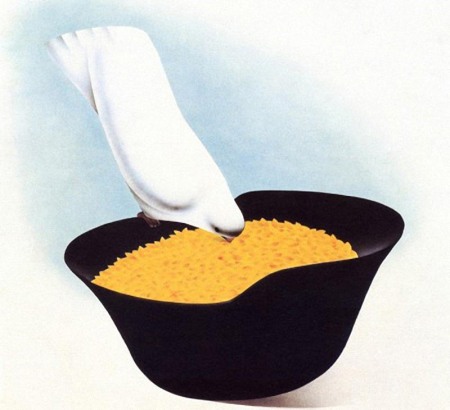


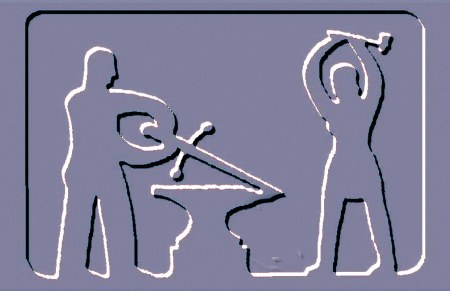


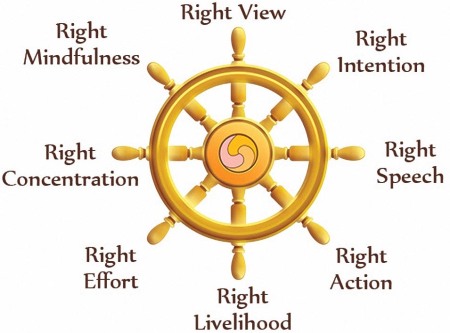
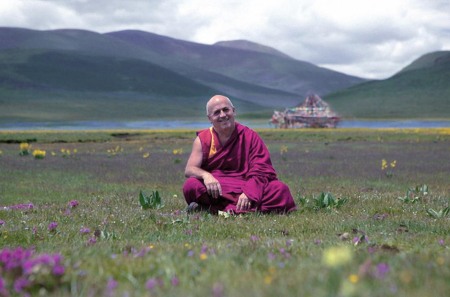

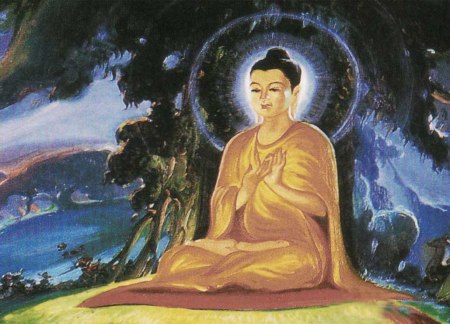
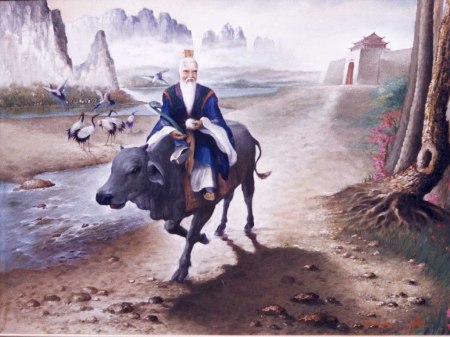

[…] Meditation practices or contemplation about the Four Noble Truth of Buddhism could give help to some. Please read the extensive discussion at https://mato48.com/2014/12/20/love-peace-and-happiness/ […]
LikeLike
May I have permission to use your image of the Eightfold Path. This will be for a book so I will need formal written permission. I would be willing to compensate you for this. The book is almost ready to go to print so a timely response would be appreciated. Thank you,
LikeLike
[…] https://mato48.com/2014/12/20/love-peace-and-happiness/ https://mato48.com/2014/11/07/about-hope/ […]
LikeLike
[…] https://mato48.com/2014/12/20/love-peace-and-happiness/ […]
LikeLike